Rediscovering the slow cooker in COVID times.
The irresistible appeal of a slow cooker is its convenience and simplicity. Turn it on, and it cooks dinner while you do other things. You have no pot to watch. It doesn’t burn or spill over. Just set it and let it do its work. Next thing you know, your kitchen smells heavenly, and you feel like your personal chef did all the work. One profound effect of the current pandemic stay-at-home culture is that we are doing more home cooking. In and of itself, this can be a good thing. However, it has also given rise to stress eating and weight gain. Remember the “Freshman 15,” the weight-gain trend on college campuses? The pandemic gives us a new trend being called “The COVID 19.” Two ways to counter unwanted weight gain are to stop eating junk food, and keeping lots of healthy foods on hand, especially plant-based whole food meals made with beans, whole grains, and vegetables.

The growing interest in slow cooking has come at a time when more and more people are focused generally on better health and healthy eating, and specifically on the benefits of a plant-based diet. When you factor in a widening awareness of world cuisine, we may well be looking at a game-changing culinary moment. This confluence of trends encouraged me to revisit a book I wrote nine years ago, Fresh from the Vegan Slow Cooker. In 2020, I authored a new book that features more than 225 recipes using only plant-based ingredients—with chapters on everything from breakfast to main courses, appetizers to desserts, and condiments and beverages. These are some of my favorites…
Root Vegetable Bisque with Herbs de Provence
6 to 8 hours
Traditional bisques are often thickened with rice, so I’ve added some to this recipe. The soup is puréed after cooking and then returned to the pot to serve. If you prefer a chunky rather than creamy soup, you can omit the puréeing step. Just don’t call it a bisque!
1 medium-size yellow onion, chopped
3 garlic cloves, chopped
2 carrots, coarsely chopped
2 medium-size parsnips, peeled and coarsely
chopped
1 small turnip, peeled and diced
1 medium-size Yukon Gold potato, peeled
and diced
1/3 cup (63 g) raw brown rice
1 (14-ounce, or 395 g) can diced tomatoes, drained 4 cups (960 ml) vegetable broth
2 teaspoons dried herbes de Provence
Salt and freshly ground black pepper
2 tablespoons (8 g) chopped fresh flat-leaf parsley,
for garnish
 1. Combine the onion and garlic in the slow cooker. Add the carrots, parsnips, turnip, potato, and rice. Stir in the tomatoes, broth, herbes de Provence, and salt and pepper to taste. Cover and cook on Low until the vegetables are tender, 6 to 8 hours.
1. Combine the onion and garlic in the slow cooker. Add the carrots, parsnips, turnip, potato, and rice. Stir in the tomatoes, broth, herbes de Provence, and salt and pepper to taste. Cover and cook on Low until the vegetables are tender, 6 to 8 hours.
2. Use an immersion blender to puree the soup right in the pot or transfer the soup, in batches, to a high-powered blender or food processor and puree until smooth, then return to the pot. Taste and adjust the seasonings, if needed. Serve hot, sprinkled with the parsley.
 Holy Mole Red Bean Chili
Holy Mole Red Bean Chili
6 to 8 hours
The rich depth of flavor from the mole sauce elevates a humble chili to new heights. I especially like the addition of chopped seitan in this chili, but you may substitute Soy Curls, tempeh, or jackfruit, if you prefer.
1 large yellow onion, chopped
4 garlic cloves, minced
1/2 small green bell pepper, seeded and chopped 3 tablespoons (48 g) tomato paste
2 tablespoons (10 g) unsweetened cocoa powder 2 tablespoons (32 g) almond butter
2 to 3 tablespoons (15 to 22.5 g) chili powder
1 tablespoon (17 g) minced chipotle chiles in adobo 1/2 teaspoon ground cinnamon
1 (14.5-ounce, or 410 g) can diced fire-roasted
tomatoes, drained and juices reserved
1 (14-ounce, or 395 g) can crushed tomatoes 3 cups (768 g) cooked dark red kidney beans
or 2 (15-ounce, or 425 g) cans beans, rinsed and drained
8 ounces (225 g) seitan, chopped
2 cups (480 ml) water
1 teaspoon salt
1/4 teaspoon freshly ground black pepper
Diced avocado, pepitas (green pumpkin seeds)
chopped scallions, and/or chopped fresh cilantro, for garnish
1. In the slow cooker combine the onion, garlic, and bell pepper. Stir in the tomato paste, cocoa, almond butter, chili powder, chipotles, cinnamon, and the juices from the diced tomatoes, stirring to blend.
2. Stir in the diced tomatoes, crushed tomatoes, beans, seitan, water, salt, and pepper. Cover and cook on Low for 6 to 8 hours.
3. Taste and adjust the seasonings, if needed. Serve hot, garnished with desired toppings.
A World of Beans
Because bean cooking was the intended use of the first slow cookers, it almost goes without saying that beans are a natural fit for the slow-cooking method. While many of us enjoy cooking a variety of different beans, it’s a safe bet that most of us have barely scratched the surface in terms of what types are available. Believe it or not, there are more than 13,000 different beans and legumes in the world. That’s a lot of beans!
Because beans take longer to cook than most vegetables, I prefer to use beans that I have already cooked in most of my recipes to avoid overcooking the vegetables. Another reason for using precooked beans in recipes is that it allows me to drain off the cooking liquid after cooking beans, making them more digestible. Cooking beans from the dried state in the slow cooker is both easy and economical. Here are some of the basics…
● A convenient way to prepare dried beans to use in recipes is to cook the beans in your slow cooker overnight on Low. They will be done by morning.
● A small piece of kombu sea vegetable added to the pot while the beans cook will help tenderize the beans while adding flavor and nutrients.
● Dried herbs should be added to beans during the final thirty minutes of cooking time. However, it is best to add fresh herbs after the beans are cooked for the best flavor.
● To keep cooked beans from drying out, cool them in their cooking liquid. For improved digestibility, be sure to drain the bean cooking liquid first before using the cooked beans in a recipe.
● Consider cooking a large amount of beans, portion them into airtight containers, and store them in the refrigerator for up to one week or in the freezer for up to six months.
Artichoke Risotto
2 hours
In order to achieve the right texture and flavor, this risotto requires a few minutes of skillet time before combining in the slow cooker. It’s not a bad trade-off when compared to all of the hands-on stirring involved in making conventional risotto. Using nutritional yeast makes this soy-free, although you can substitute a soy-free vegan Parmesan instead.
1/4 cup (60 ml) water, or 2 teaspoons olive oil 1 small yellow onion or 2 shallots, minced
1/4 cup (60 ml) dry white wine
1 1/4 cups (237.5 g) Arborio rice
3 1/2 cups (840 ml) vegetable broth, plus more
if needed
2 teaspoons chopped fresh thyme leaves,
or 1 teaspoon dried thyme
1/2 teaspoon salt
2 cups (600 g) canned or frozen artichoke hearts,
thawed, chopped
2 tablespoons (7.5 g) nutritional yeast, or 1/4 cup
(33.5 g) Almond Parmesan
2 teaspoons fresh lemon juice
Freshly ground black pepper
1/4 cup (30 g) chopped toasted walnuts, for
garnish
2 tablespoons (6 g) snipped fresh chives, for garnish;
1. Heat the water or oil in a medium-size skillet over medium-high heat. Add the onion and sauté until softened, about 5 minutes. Stir in the wine and cook for 30 seconds, then add the rice and cook, stirring, for 2 minutes.
2. Transfer the rice mixture to the slow cooker. Add the broth, thyme, and salt, cover, and cook on High until all of the liquid is absorbed and the rice is just tender, about 2 hours.
3. Stir in the artichokes, nutritional yeast, lemon juice, and pepper to taste. Taste and adjust the seasonings, if needed. If the mixture is too dry, stir in a little more hot broth as needed.
4. Serve hot, spooned into shallow bowls. Sprinkle each serving with the toasted walnuts and chives.
Why Slow-Cook?
• It’s a convenient way to prepare healthy home-cooked meals.
• It allows you to cook and serve in the same vessel, so it saves on cleanup time.
• It can have dinner ready and waiting for you at the end of the day.
• The slow, gentle cooking adds depth of flavor to foods.
• It keeps the kitchen cool on hot days.
• It’s an ideal way to cook beans and seitan from scratch.
• It doubles as a chafing dish or hot punch bowl at parties.
• It’s economical because it uses less energy than oven cooking and makes great leftovers.
• It can be used as a mini-oven to slow-bake cakes, casseroles, potatoes, and more
• It frees up stovetop burners when cooking for parties or for a crowd on holidays.
 Rustic Potpie Topped with Chive Biscuits
Rustic Potpie Topped with Chive Biscuits
5 to 7 hours
This rustic potpie features a top crust of tender drop biscuits that cook right in the slow cooker. The steam heat produces a soft and tender biscuit topping. If you prefer a drier texture to the biscuits, let the cooked potpie sit uncovered for about 10 minutes before serving. To make this gluten-free, use diced tempeh or extra-firm tofu instead of seitan and use a gluten-free flour blend. For soy-free, omit the soy sauce and use Soy-Free Sauce, or coconut aminos, or add some soy-free vegetable broth base or additional salt, and a soy-free plant milk.
2 tablespoons (30 ml) plus 2 teaspoons olive oil 1 medium-size yellow onion, minced
2 large carrots, peeled and minced
2 tablespoons (32 g) tomato paste
1 teaspoon dried thyme
1/2 teaspoon dried marjoram
1 cup (124 g) plus 3 tablespoons (23.25 g)
all-purpose flour
3 tablespoons (45 ml) dry red wine
1 tablespoon (15 ml) soy sauce
1 cup (240 ml) vegetable broth
2 medium-size Yukon Gold potatoes, peeled and
cut into 1/2-inch (1 cm) dice
8 ounces (225 g) cremini mushrooms, coarsely
chopped
8 ounces (225 g) seitan, cut into 1/2-inch (1 cm) dice Salt and freshly ground black pepper
3/4 cup (97.5 g) frozen green peas, thawed
11/2 teaspoons baking powder
1 tablespoon (0.2 g) dried or (3 g) snipped fresh chives 1/2 cup (120 ml) plain unsweetened plant milk

1. Heat 2 teaspoons of oil in a large skillet over medium-high heat. Add the onion and carrots and sauté for 5 minutes. Stir in the tomato paste, thyme, and marjoram and cook for 1 minute longer. Sprinkle on 3 tablespoons (23.25 g) of flour and cook for 30 seconds. Add the wine, soy sauce, and broth, stirring after each addition.
2. Transfer the onion mixture to the slow cooker. Add the potatoes, mushrooms, seitan, 1/2 teaspoon of salt, and 1/4 teaspoon of pepper. Cover and cook on Low until the vegetables are tender, 4 to 6 hours. Taste and adjust the seasonings, if needed, then stir in the green peas.
3. In a large bowl, combine the remaining 1 cup (124 g) of flour, the baking powder, chives, and 1/2 teaspoon salt. Quickly stir in the plant milk and the remaining 2 tablespoons (30 ml) of oil until just blended. Drop the biscuit mixture by large spoonfuls onto the surface of the simmering stew. Turn the heat setting to High, cover, and cook until the dough is cooked through, about 1 hour longer.
4. Serve within 15 minutes after the biscuit dough has finished cooking.
Variations: Instead of the seitan, use cooked chickpeas or chopped tempeh. You could also use sweet potatoes instead of the white potatoes, or add turnips in addition to the carrots, and so on. Different herbs could be used in the biscuits—instead of chives, try dill and a little dried savory, if you have some.
Happy Half-Century
The Rival Crock-Pot turns 50 this year. In 1971, Rival bought the “original” consumer electric slow cooker, the Naxon Beanery, which was originally developed for bean cooking. The Crock-Pot was marketed to working women as a way to make a home-cooked meal while they were at work, and they quickly put it to use in preparing pot roasts and other meat-centric dishes. A phenomenal hit at the time, the Crock-Pot fad faded, only to enjoy a resurgence some 30 years later. Since the early ’70s, more than 80 million slow cookers have been sold.
 Coconut Rice Pudding
Coconut Rice Pudding
with Mango
1 1/2 to 2 hours
A favorite dessert in Thai restaurants, rice pudding with fresh mango is easy to make at home in your slow cooker. If you prefer a sweeter pudding, add up to 1/4 cup (50 g) extra sugar.
1 1/2 cups (300 g) raw jasmine rice
1/2 cup (100 g) granulated natural sugar,
or more to taste
1/4 teaspoon salt
2 (14-ounce, or 395 g) cans unsweetened
coconut milk
1/2 cup (120 ml) unsweetened plant milk, plus
more if needed
1 teaspoon coconut extract
1 teaspoon pure vanilla extract
1 large ripe mango, peeled, pitted, and chopped
1. Lightly coat the slow cooker insert with vegan butter or nonstick cooking spray. Combine the rice, sugar, and salt in the cooker. In a saucepan or the microwave, heat the coconut milk and plant milk just to boiling. Slowly add the heated milks to the slow cooker, stirring to dissolve the sugar. Cover and cook on High until the rice is tender, about 1 1/2 hours.
2. Turn off the slow cooker and stir in the coconut and vanilla extracts. Allow to cool, uncovered, for 10 minutes, then stir in the mango. To help thicken the pudding, stir it gently to let it absorb any remaining liquid; it will continue to thicken as it cools. If the pudding is too thick, stir in a little more plant milk until it’s the consistency you like. The pudding can be served warm, at room temperature, or chilled. To serve chilled, spoon the pudding into dessert glasses, cover, and refrigerate until cold.

A slow cooker is an easy way to prepare nourishing and comforting dishes such as chili, casseroles, stews, and hearty soups made with beans, grains, and vegetables. Preparing food in a slow cooker retains all the nutrients and condenses the delicious flavors. And because slow-cooked dishes can be made without oil, they are low in fat and contain no cholesterol, making them ideal for these challenging times when we may be prone to eating more. EDGE
Editor’s Note:
Robin Robertson is a veteran restaurant chef, cooking teacher and columnist. She has authored numerous cookbooks, including The Plant-Based Slow Cooker ($27.99 Harvard Common Press) and best-sellers Fresh from the Vegan Slow Cooker, Vegan Planet, Vegan on the Cheap, and Quick-Fix Vegan. For more info visit her web site robinrobertson.com.
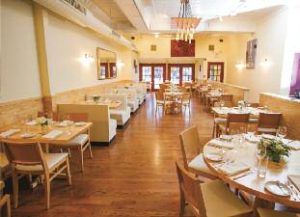
 Wine Times
Wine Times


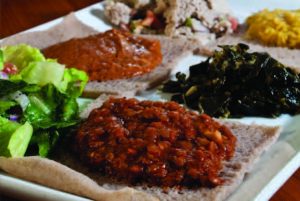
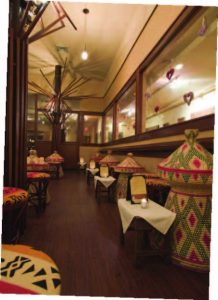 Exotic Collegiate
Exotic Collegiate

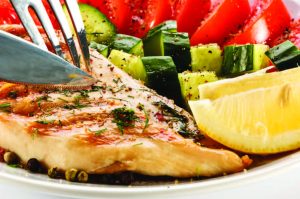
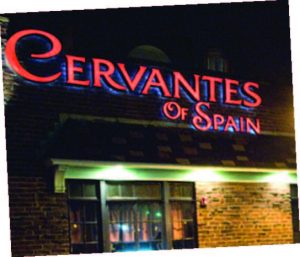 Cervantes is located in a modest brick structure astride the train station in Cranford. (Come after 6 p.m., we were advised, and parking is free in the train station lot.) It’s part bar/lounge, where there’s often a lively happy hour, and part dining room. When the weather’s amenable, there’s a patio for outdoor dining. Imagine sipping cava, Spain’s sparkling wine, on that patio this summer as a prelude to a round of tapas.
Cervantes is located in a modest brick structure astride the train station in Cranford. (Come after 6 p.m., we were advised, and parking is free in the train station lot.) It’s part bar/lounge, where there’s often a lively happy hour, and part dining room. When the weather’s amenable, there’s a patio for outdoor dining. Imagine sipping cava, Spain’s sparkling wine, on that patio this summer as a prelude to a round of tapas. Often, literally. There are LPs galore as decor and a deejay at a computer taking requests. I somewhat hesitantly ask for John Coltrane and, within a minute, get a couple tracks of Coltrane. We take menus from a tuned-in server and receive a concise, but not condescending primer on how to navigate a rather novel bill of fare. We dig into a series of dishes that connect the accessible to the adventurous and fall in love with Roosterspin’s cuisine—and concept.
Often, literally. There are LPs galore as decor and a deejay at a computer taking requests. I somewhat hesitantly ask for John Coltrane and, within a minute, get a couple tracks of Coltrane. We take menus from a tuned-in server and receive a concise, but not condescending primer on how to navigate a rather novel bill of fare. We dig into a series of dishes that connect the accessible to the adventurous and fall in love with Roosterspin’s cuisine—and concept. It is time for another small plate, which is how you can start here or dine straight through. Slurp map chae, sizzling skinny sweet potato noodles spliced with beef, wild mushrooms and shards of Asian vegetables. Bright and unexpectedly light are the seafood patties known as seafood jeon, packed with calamari, shrimp and vegetables and bound by egg. If you are looking for something hearty, snag galbi LA cut, a signature dish here, is a perfect partnership of silky short ribs with rice cakes and vegetables served with a nod to beloved Korean barbecue. Looking for light? The mango salad, flush with pretty beets and sweet potatoes and dressed with sesame, is a dandy mix of flavors that you will have a hard time separating ever again.
It is time for another small plate, which is how you can start here or dine straight through. Slurp map chae, sizzling skinny sweet potato noodles spliced with beef, wild mushrooms and shards of Asian vegetables. Bright and unexpectedly light are the seafood patties known as seafood jeon, packed with calamari, shrimp and vegetables and bound by egg. If you are looking for something hearty, snag galbi LA cut, a signature dish here, is a perfect partnership of silky short ribs with rice cakes and vegetables served with a nod to beloved Korean barbecue. Looking for light? The mango salad, flush with pretty beets and sweet potatoes and dressed with sesame, is a dandy mix of flavors that you will have a hard time separating ever again.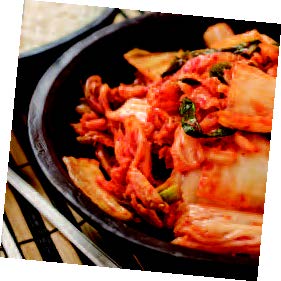 Palisades Park’s next-door neighbor, Fort Lee, also boasts a large Korean population, as well as a robust commercial section featuring Korean shops and restaurants, which stretches from just south of the George Washington Bridge north to Englewood Cliffs. Two of the best are Gammeeok on Main Street and Dong Bang Grill on Palisade Avenue. Besides traditional Korean fare, Dong Bang Grill also does a brisk business at the sushi bar—which is saying something, considering the number of excellent Japanese restaurants in Fort Lee.
Palisades Park’s next-door neighbor, Fort Lee, also boasts a large Korean population, as well as a robust commercial section featuring Korean shops and restaurants, which stretches from just south of the George Washington Bridge north to Englewood Cliffs. Two of the best are Gammeeok on Main Street and Dong Bang Grill on Palisade Avenue. Besides traditional Korean fare, Dong Bang Grill also does a brisk business at the sushi bar—which is saying something, considering the number of excellent Japanese restaurants in Fort Lee.

 1. Combine the onion and garlic in the slow cooker. Add the carrots, parsnips, turnip, potato, and rice. Stir in the tomatoes, broth, herbes de Provence, and salt and pepper to taste. Cover and cook on Low until the vegetables are tender, 6 to 8 hours.
1. Combine the onion and garlic in the slow cooker. Add the carrots, parsnips, turnip, potato, and rice. Stir in the tomatoes, broth, herbes de Provence, and salt and pepper to taste. Cover and cook on Low until the vegetables are tender, 6 to 8 hours. Holy Mole Red Bean Chili
Holy Mole Red Bean Chili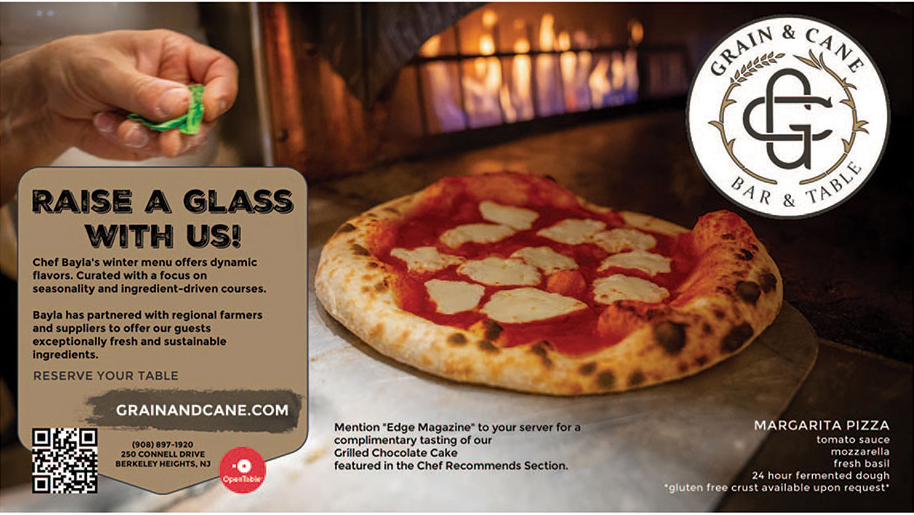

 Rustic Potpie Topped with Chive Biscuits
Rustic Potpie Topped with Chive Biscuits

 Coconut Rice Pudding
Coconut Rice Pudding

 Alan Richman, restaurant critic for GQ magazine, dean of food journalism and new media at the International Culinary Center in New York, author of the acclaimed book Fork It Over as well as thousands of newspaper and magazine articles, and recipient of the Bronze Star in the Vietnam War, is having lunch at Martino’s Cuban Restaurant on West Main Street in Somerville. It is a hot summer day.
Alan Richman, restaurant critic for GQ magazine, dean of food journalism and new media at the International Culinary Center in New York, author of the acclaimed book Fork It Over as well as thousands of newspaper and magazine articles, and recipient of the Bronze Star in the Vietnam War, is having lunch at Martino’s Cuban Restaurant on West Main Street in Somerville. It is a hot summer day. His grandparents, Rose and Nathan Rabinowitz, belonged to the Orthodox temple in Somerville, where young Richman “sat through services in 107-degree heat.” Though his grandmother “wasn’t a very good cook,” she did make a “fine kuchin.”
His grandparents, Rose and Nathan Rabinowitz, belonged to the Orthodox temple in Somerville, where young Richman “sat through services in 107-degree heat.” Though his grandmother “wasn’t a very good cook,” she did make a “fine kuchin.”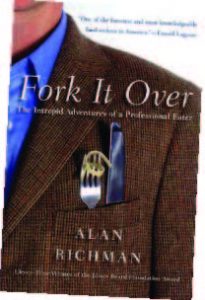 FOR FUTURE REFERENCE
FOR FUTURE REFERENCE
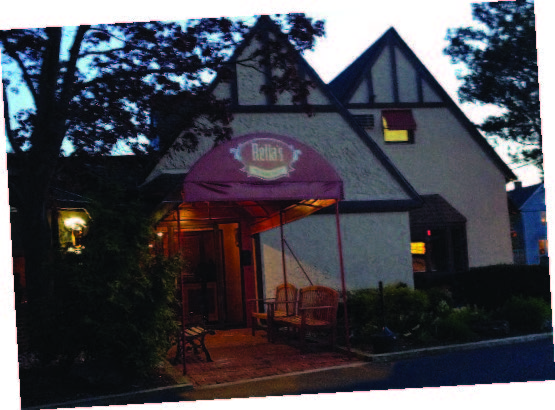 There is a rule of thumb in the restaurant business: Try to be everything to all people, and the best you’ll be is Applebee’s. The worst you’ll be is out of business. That being said, Rella’s Italian Tavern proves you can serve two masters, both literally and figuratively. The restaurant’s menu offers two ways to go (as its name implies), imaginative Italian cuisine or reliable tavern fare. Co-owner Sal Chiarella knows his way around both kitchens. He created and sold both the neighborhood go-to spot Harborside Grill in Atlantic Highlands and Fratello’s, a high-end Italian eatery in Sea Girt. Both are still going strong.
There is a rule of thumb in the restaurant business: Try to be everything to all people, and the best you’ll be is Applebee’s. The worst you’ll be is out of business. That being said, Rella’s Italian Tavern proves you can serve two masters, both literally and figuratively. The restaurant’s menu offers two ways to go (as its name implies), imaginative Italian cuisine or reliable tavern fare. Co-owner Sal Chiarella knows his way around both kitchens. He created and sold both the neighborhood go-to spot Harborside Grill in Atlantic Highlands and Fratello’s, a high-end Italian eatery in Sea Girt. Both are still going strong. ON THE TAVERN SIDE
ON THE TAVERN SIDE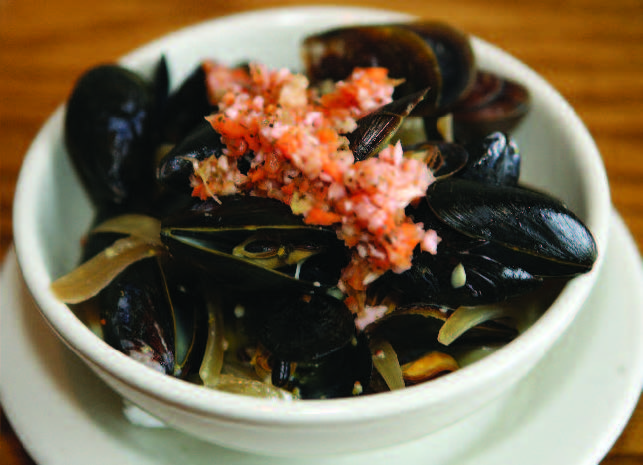 A Toute Heure • 232 Centennial Ave. • Cranford 908-276-6600 • atouteheure.com
A Toute Heure • 232 Centennial Ave. • Cranford 908-276-6600 • atouteheure.com Aunt Charlotte’s • 3 West Maple Ave. • Merchantville • 856-662-0058 • auntcharlottescandy.com
Aunt Charlotte’s • 3 West Maple Ave. • Merchantville • 856-662-0058 • auntcharlottescandy.com Drew’s Bayshore Bistro • 25 Church St. • Keyport • 732-739-9219 • bayshorebistro.com
Drew’s Bayshore Bistro • 25 Church St. • Keyport • 732-739-9219 • bayshorebistro.com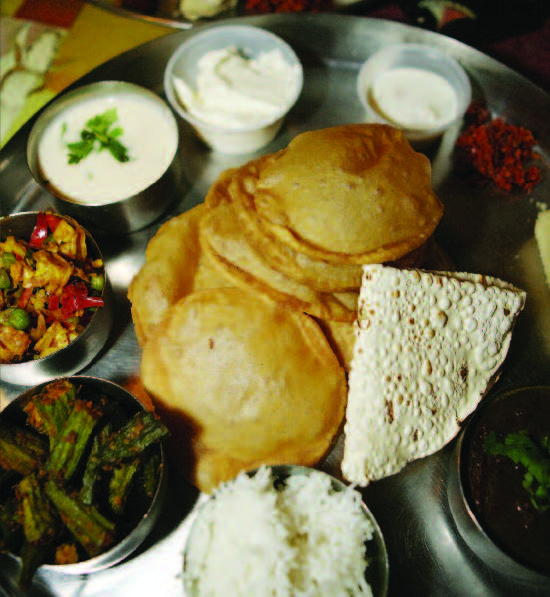 Jhupdi • 1679 Oak Tree Road • Edison • 732-906-2121 • jhupdirestaurant.com
Jhupdi • 1679 Oak Tree Road • Edison • 732-906-2121 • jhupdirestaurant.com Mitsuwa Marketplace • 595 River Road • Edgewater • 201-941-9113 • mitsuwa.com
Mitsuwa Marketplace • 595 River Road • Edgewater • 201-941-9113 • mitsuwa.com BLUE BY YOU
BLUE BY YOU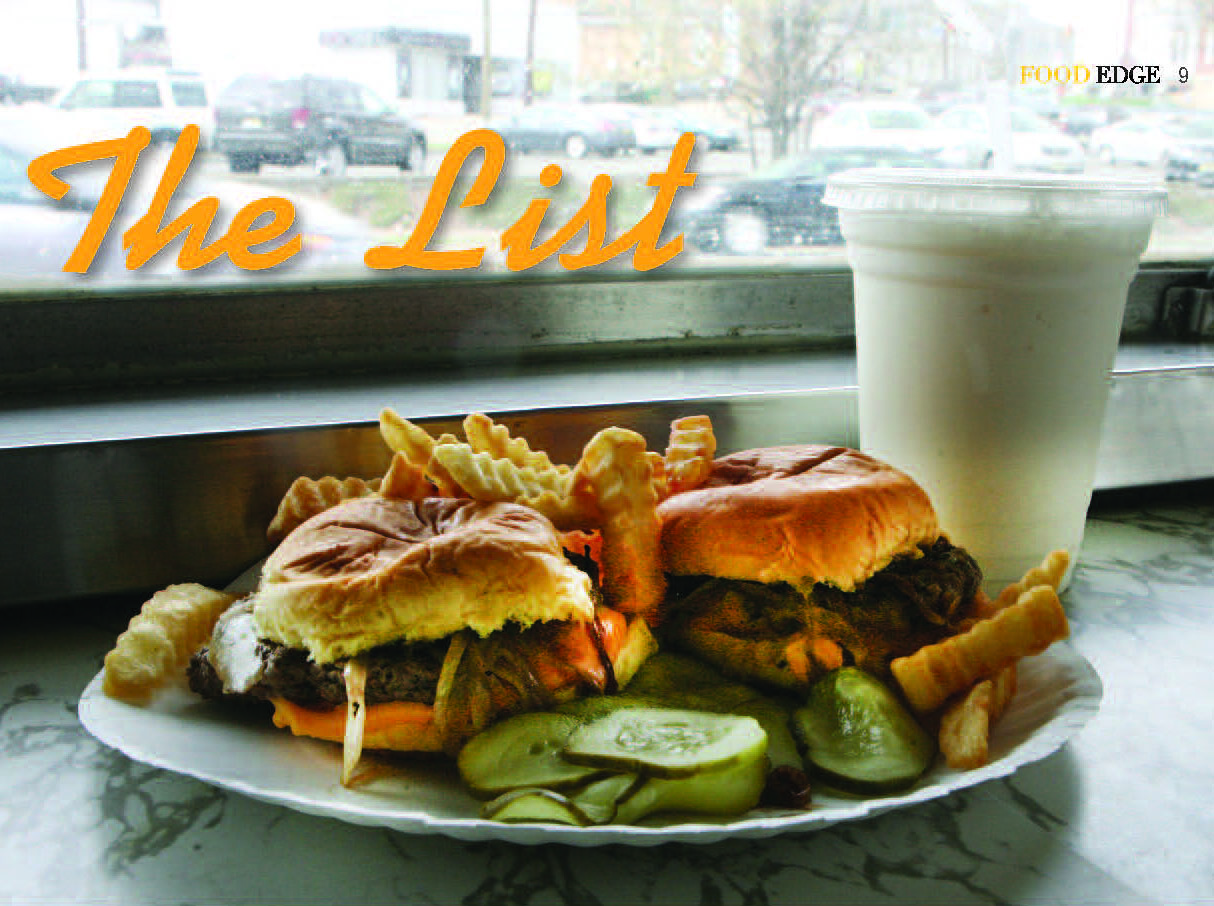
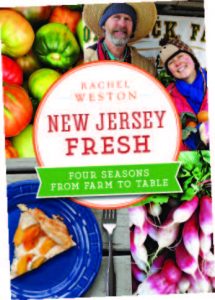











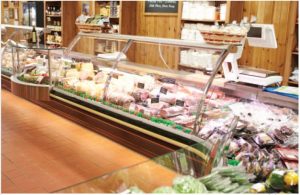





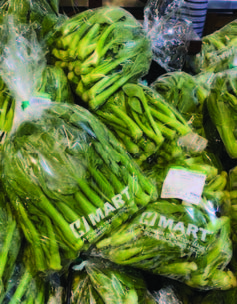
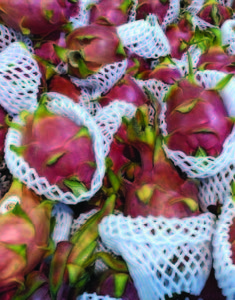

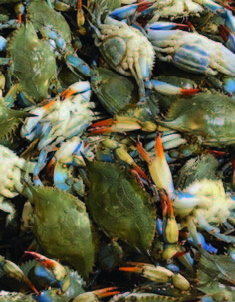
 Better Shop Around
Better Shop Around
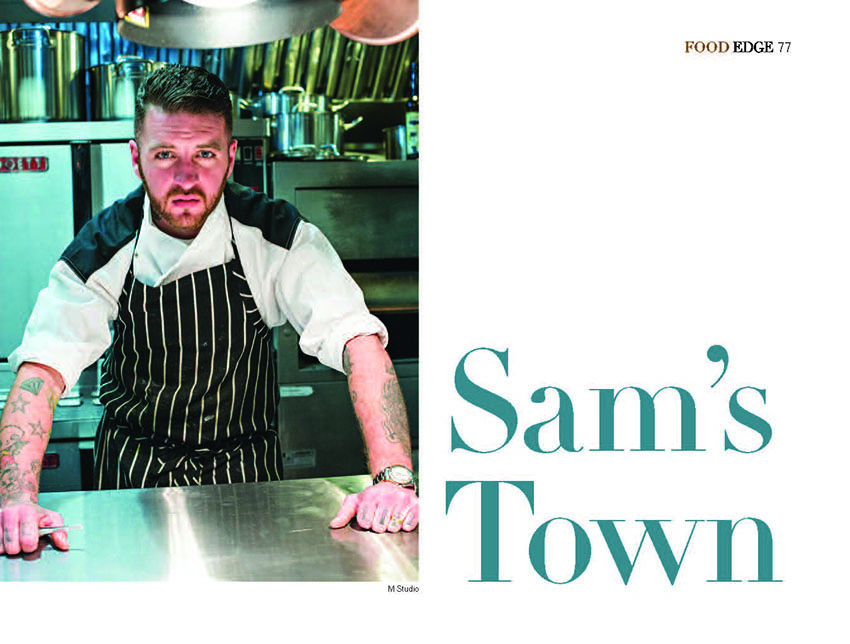
 LeVine is known for his ability to make culinary magic happen no matter what he’s preparing, whether it’s a hand-crafted burger or a six-course prix fixe menu. “We’re not pulling food out of the freezer,” he points out. “We’re making everything from scratch, from smoking our meats in-house to making our own sorbet and gelato.”
LeVine is known for his ability to make culinary magic happen no matter what he’s preparing, whether it’s a hand-crafted burger or a six-course prix fixe menu. “We’re not pulling food out of the freezer,” he points out. “We’re making everything from scratch, from smoking our meats in-house to making our own sorbet and gelato.” The confluence of skills and experience DeSimone and LeVine brings to Morris Tap & Grill and Paragon Tap & Table certainly helps explain the unique qualities of each location. DeSimone began his career in Hoboken, with stops in New York City, Philadelphia and Charlotte before settling in New Jersey.
The confluence of skills and experience DeSimone and LeVine brings to Morris Tap & Grill and Paragon Tap & Table certainly helps explain the unique qualities of each location. DeSimone began his career in Hoboken, with stops in New York City, Philadelphia and Charlotte before settling in New Jersey. CRAFT BREW FAST FIVE
CRAFT BREW FAST FIVE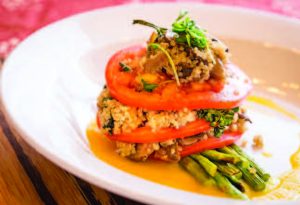 In LeVine’s case, one might say that life circumstances bred him for success. His passion for cooking was sparked at age six (thanks to a Disney cookbook, he recalls) in his Brooklyn household, where money was tight. “My mom did the best she could, but I grew up pretty poor,” he says. “When it came to food, pickings were slim. You ate what you got, and that was it.”
In LeVine’s case, one might say that life circumstances bred him for success. His passion for cooking was sparked at age six (thanks to a Disney cookbook, he recalls) in his Brooklyn household, where money was tight. “My mom did the best she could, but I grew up pretty poor,” he says. “When it came to food, pickings were slim. You ate what you got, and that was it.”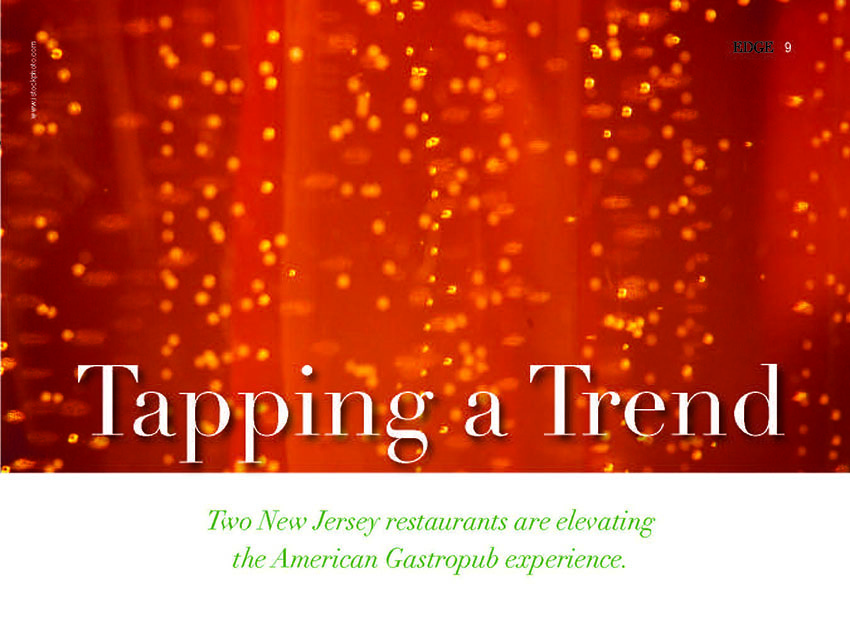
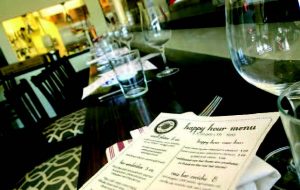
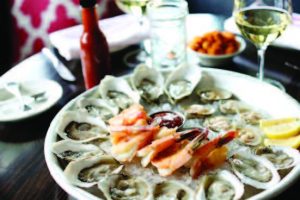
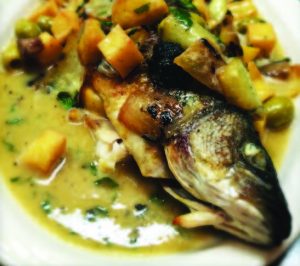

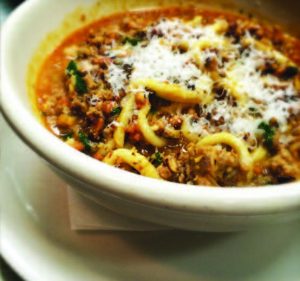


 BYOB…WITH A TWIST
BYOB…WITH A TWIST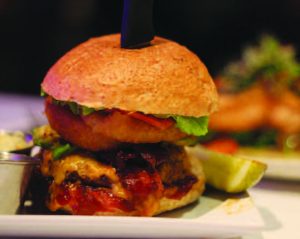
















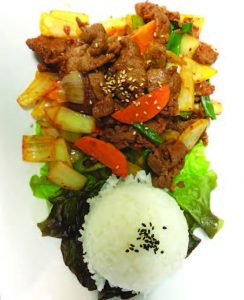
 Why it has taken more than a decade of the 21st century for Jerseyites to welcome Korea’s comfort foods to their backyards puzzles me. But after years of trekking to Fort Lee, Palisades Park and Edison, I’m grateful that Brian Kim and his parents Helen and Kenny were brave enough to bring Seoulville to at least one corner of New Jersey that lacked real-deal bibimbap.
Why it has taken more than a decade of the 21st century for Jerseyites to welcome Korea’s comfort foods to their backyards puzzles me. But after years of trekking to Fort Lee, Palisades Park and Edison, I’m grateful that Brian Kim and his parents Helen and Kenny were brave enough to bring Seoulville to at least one corner of New Jersey that lacked real-deal bibimbap.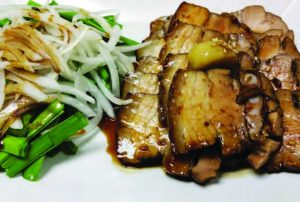 For here, the chicken wings come glazed sweet and spicy—and that do-si-do of dolce and daring isn’t sticky and cloying, but invigorating to the meat. Which is the point. The seafood and scallion pajeon, a pancake that tilts in texture to an omelet crossed with a crepe, isn’t even a tad oily, allowing the shreds of shrimp and squid to take charge. My favorite starter is the fried tofu, batter-dipped cubes with taut, crisp crusts that squirt with milkiness. Eat a cube, with or without a brush of sweet soy glaze, then check out the banchan–small bowls of vegetables and condiments, including cubed radish, sliced cucumbers, pepper-licked potatoes, marinated mungbean sprouts–and enjoy the interplay.
For here, the chicken wings come glazed sweet and spicy—and that do-si-do of dolce and daring isn’t sticky and cloying, but invigorating to the meat. Which is the point. The seafood and scallion pajeon, a pancake that tilts in texture to an omelet crossed with a crepe, isn’t even a tad oily, allowing the shreds of shrimp and squid to take charge. My favorite starter is the fried tofu, batter-dipped cubes with taut, crisp crusts that squirt with milkiness. Eat a cube, with or without a brush of sweet soy glaze, then check out the banchan–small bowls of vegetables and condiments, including cubed radish, sliced cucumbers, pepper-licked potatoes, marinated mungbean sprouts–and enjoy the interplay. For weeks after that dinner, I thought of Seoulville. Its mission to serve as a bridge between mother country authentic and suburban Jersey educational did make me a little sad, however. I kept wishing the Kims didn’t feel that need to cotton to Western palates at all. But they are in it for the long haul, definitely wanting to take locals on a culinary trip. I stopped back with a friend, ostensibly for bowls of a couple of soups I’d missed, but really to see how the little place with the big heart was doing.
For weeks after that dinner, I thought of Seoulville. Its mission to serve as a bridge between mother country authentic and suburban Jersey educational did make me a little sad, however. I kept wishing the Kims didn’t feel that need to cotton to Western palates at all. But they are in it for the long haul, definitely wanting to take locals on a culinary trip. I stopped back with a friend, ostensibly for bowls of a couple of soups I’d missed, but really to see how the little place with the big heart was doing. Seoulville, a modest but pleasant storefront with subdued décor and the most welcoming of service, could be part of the natural progression of things culinary. It might just be what the good denizens of New Jersey had to work up to. But it’s also about a carefully orchestrated menu by the Kim family and a style of cooking that’s at once educational and experimental, yet purposefully easy to digest. We’re getting there.
Seoulville, a modest but pleasant storefront with subdued décor and the most welcoming of service, could be part of the natural progression of things culinary. It might just be what the good denizens of New Jersey had to work up to. But it’s also about a carefully orchestrated menu by the Kim family and a style of cooking that’s at once educational and experimental, yet purposefully easy to digest. We’re getting there. BYOB
BYOB


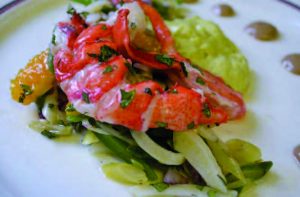

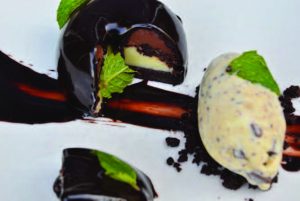
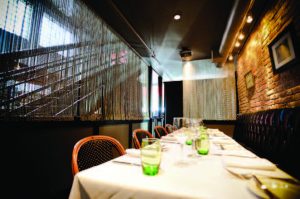
 Uncle Momo, a French-Lebanese bistro a few blocks away, has a bountiful brunch menu (as well as lunch and dinner). Owner and chef Wissam Elmasri, who is Lebanese and attended culinary school in France, serves a mix of American, French and Middle Eastern fare. The crepes, made from quinoa, are light and airy. The most unusual is Zeit W Zaatar, made with labne (yogurt cheese), cucumbers and olives, all seasoned with dried thyme. My two favorites—spinach & goat cheese and smoked salmon & spinach—are delicately flavored and topped with greens. Ruby red pomegranate seeds give the salad an unexpected zing.
Uncle Momo, a French-Lebanese bistro a few blocks away, has a bountiful brunch menu (as well as lunch and dinner). Owner and chef Wissam Elmasri, who is Lebanese and attended culinary school in France, serves a mix of American, French and Middle Eastern fare. The crepes, made from quinoa, are light and airy. The most unusual is Zeit W Zaatar, made with labne (yogurt cheese), cucumbers and olives, all seasoned with dried thyme. My two favorites—spinach & goat cheese and smoked salmon & spinach—are delicately flavored and topped with greens. Ruby red pomegranate seeds give the salad an unexpected zing. Ani Ramen, a trendy Japanese noodle house that opened in 2014, is a good place for lunch, snack or a casual dinner. Its success is not surprising, given that owner Luck Sarabhayavanija and his team tried hundreds of combinations of noodles and broth before settling on a menu. The result: A half-dozen ramens to showcase and about 20 more in the mix. “We have a simple chicken broth, a more complex miso, a brothless ramen with intense flavor, a wonderful vegetarian—our hidden gem—and our signature rich and creamy pork broth,” he says.
Ani Ramen, a trendy Japanese noodle house that opened in 2014, is a good place for lunch, snack or a casual dinner. Its success is not surprising, given that owner Luck Sarabhayavanija and his team tried hundreds of combinations of noodles and broth before settling on a menu. The result: A half-dozen ramens to showcase and about 20 more in the mix. “We have a simple chicken broth, a more complex miso, a brothless ramen with intense flavor, a wonderful vegetarian—our hidden gem—and our signature rich and creamy pork broth,” he says.  Mesob, where the food cries out for sharing. It arrives on a pizza-sized communal platter, to be eaten not with fork or spoon but with injera, the spongy flatbread that doubles as an eating implement in Ethiopia. Friendly waiters keep replenishing your supply as long as there’s food left to be scooped up. Order carefully here. My husband and I often ask for chicken and lamb tibs—marinated and sautéed with onions, garlic and jalapenos—prepared “between mild and medium,” but which is quite spicy. If you prefer food with little or no heat, select dishes marked “mild.” Each entrée comes with two sides. Misia wat (spicy lentils) and kik aletcha (yellow split peas) are among my favorites.
Mesob, where the food cries out for sharing. It arrives on a pizza-sized communal platter, to be eaten not with fork or spoon but with injera, the spongy flatbread that doubles as an eating implement in Ethiopia. Friendly waiters keep replenishing your supply as long as there’s food left to be scooped up. Order carefully here. My husband and I often ask for chicken and lamb tibs—marinated and sautéed with onions, garlic and jalapenos—prepared “between mild and medium,” but which is quite spicy. If you prefer food with little or no heat, select dishes marked “mild.” Each entrée comes with two sides. Misia wat (spicy lentils) and kik aletcha (yellow split peas) are among my favorites.  Costanera, a Peruvian restaurant whose owner/chef, Juan Placenia, was born in Lima but moved here when he was a tot, is two doors away. He graduated from the Culinary Institute of America, and everything I’ve eaten here—even the humble rotisserie chicken—has been top-notch. That
Costanera, a Peruvian restaurant whose owner/chef, Juan Placenia, was born in Lima but moved here when he was a tot, is two doors away. He graduated from the Culinary Institute of America, and everything I’ve eaten here—even the humble rotisserie chicken—has been top-notch. That  If you love Paris—and who doesn’t?—save room for dessert at Le Petit Parisien. Crepes, salads and sandwiches are also served here, but the macarons, pastries and croissants create the biggest buzz. Macarons come in many flavors and hues, including raspberry,
If you love Paris—and who doesn’t?—save room for dessert at Le Petit Parisien. Crepes, salads and sandwiches are also served here, but the macarons, pastries and croissants create the biggest buzz. Macarons come in many flavors and hues, including raspberry, 